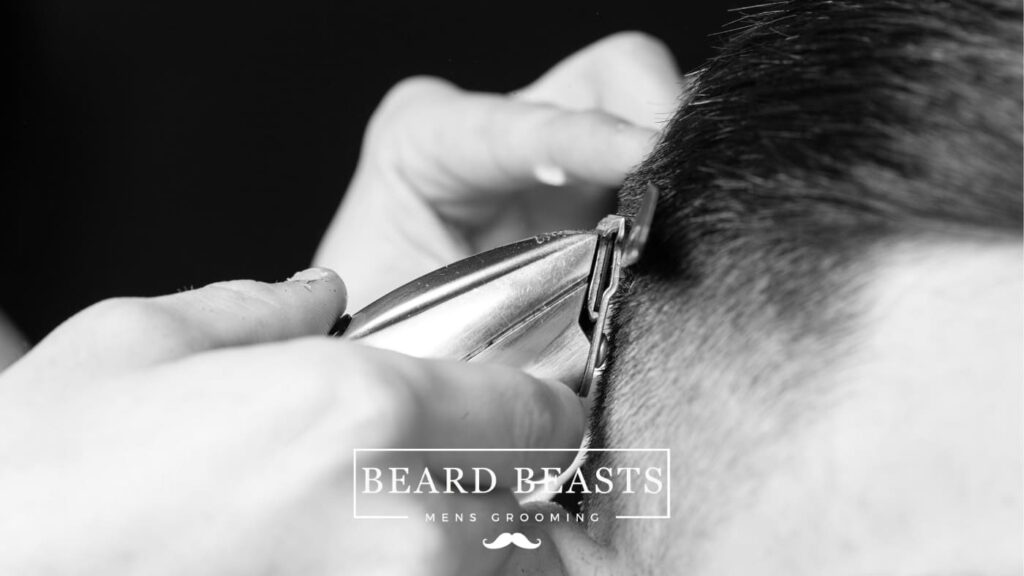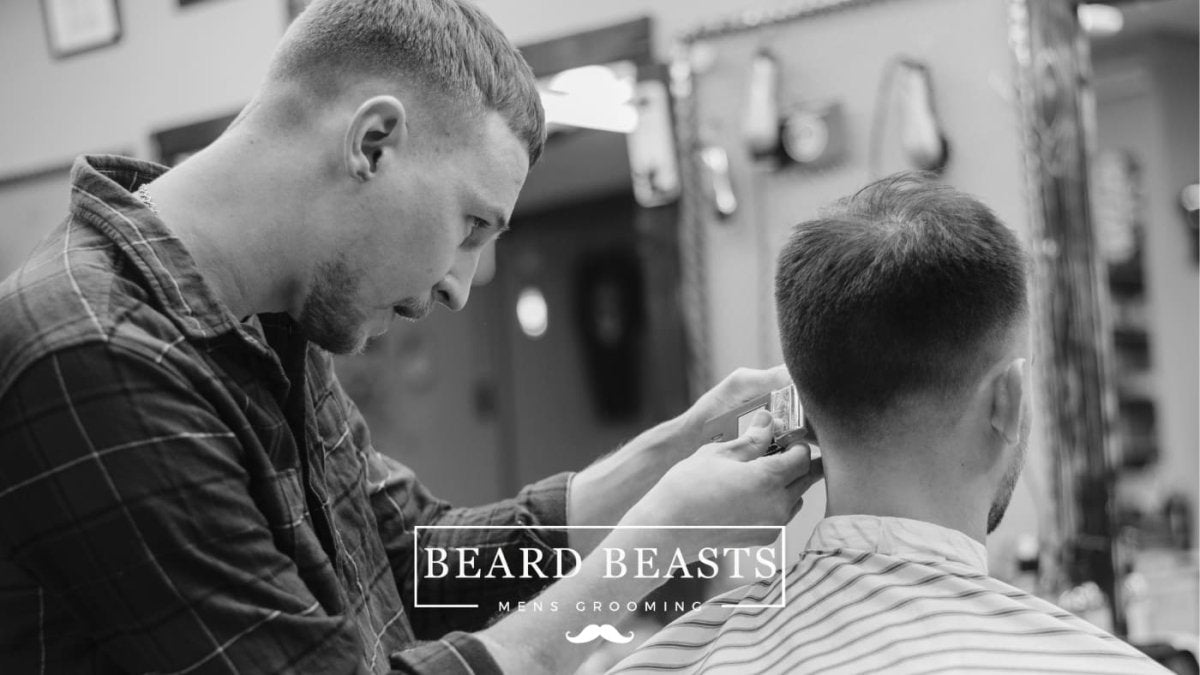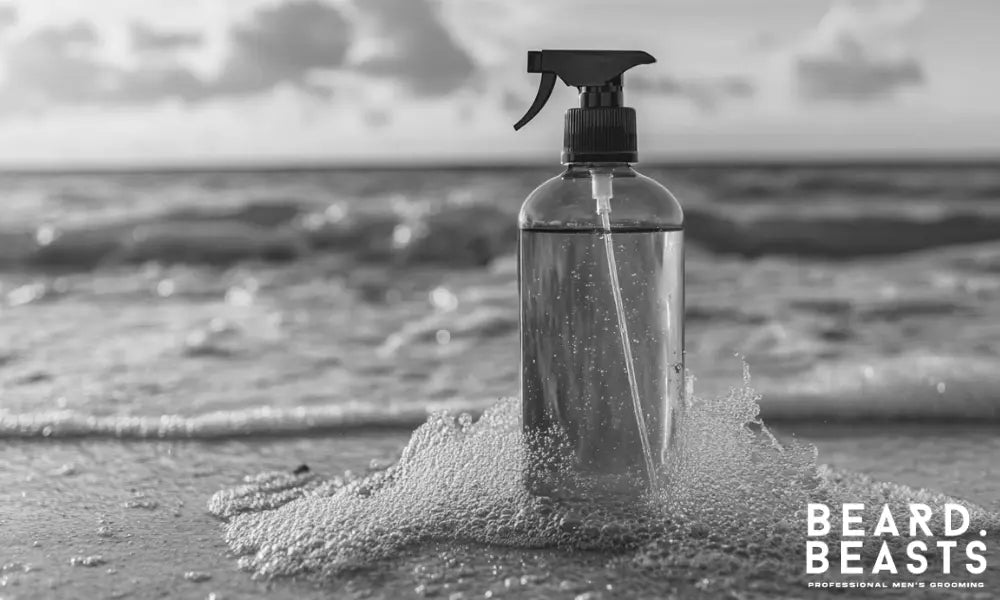Navigating the world of stylish haircuts can be a bit overwhelming, especially when you’re aiming for a specific look like a taper fade. This versatile and popular hairstyle has been a favorite for its sleek appearance and the way it can be customized to suit anyone’s style. However, the key to achieving the perfect taper fade lies not just in what you want, but in how you communicate your vision to your barber. If you’ve ever found yourself puzzled on how to ask for a taper fade or unsure of what exactly to say to get the results you desire, you’re in the right place.
This article is designed to guide you through everything from the basics of taper levels to the specifics of communicating your desired look, maintaining your haircut, and even addressing common questions. With simple language and clear, readable formatting, we aim to provide valuable insights that will prepare you for your next barber visit.
Whether you’re a first-timer or looking to refine your current style, follow along for essential tips on how to ask for a taper fade and ensure you walk out of the barbershop with a haircut you love.
Understanding Taper Fade Levels
When you’re figuring out how to ask for a taper fade, knowing the differences between low, mid, and high taper fades is your first step. Each type offers a unique look, catering to various styles and preferences. Let’s break them down:

Low Taper Fade
The low taper fade starts just above the ears and subtly blends into longer hair on top. Choose this style if you’re after a more conservative look that’s perfect for professional environments or if you’re dipping your toes into the world of fades for the first time. It’s understated yet stylish, offering a clean finish without straying too far from traditional haircuts.
Mid Taper Fade
Sitting in the sweet spot between the low and high, the mid taper fade begins around the height of the temples. This cut is ideal for those who want a balance between bold and subtle. It’s versatile enough for both casual and formal settings, making it a popular choice for many. If you’re unsure which level to choose, the mid taper fade is a safe and fashionable bet.
High Taper Fade
The high taper fade makes a statement by starting high up on the sides and back, often at or above the parietal ridge. Opt for this style if you’re looking to highlight the styling on top of your head or if you prefer a more dramatic contrast between the sides and the top. It’s best suited for individuals who want their haircut to stand out and are comfortable with a more noticeable fade.
Choosing Your Fade
Understanding these levels is crucial in conveying exactly what you want to your barber when figuring out how to ask for a taper fade. Whether you’re aiming for a low, mid, or high taper fade, the key is clear communication. Explicitly mention your preferred fade level and discuss how it blends with the top.
Remember, mastering how to ask for a taper fade is the first step toward achieving a great fade. Keep this guide in mind during your next barber visit for a seamless experience and a haircut that’s precisely tailored to your liking.
Preparing to Communicate Your Desired Taper Fade
Getting the perfect taper isn’t just about knowing the different levels; it’s also about effectively communicating your vision to your barber, highlighting the importance of understanding how to ask for a taper fade. Here’s how you can prepare for that all-important conversation:
Research
Before heading to the barber, spend some time researching and collecting pictures of the taper fade style you love. This is a crucial step in understanding how to ask for a taper fade, as visuals can bridge the gap between your idea and the barber’s understanding. A picture not only speaks a thousand words but ensures you and your barber are on the same page from the get-go.
Vocabulary
Familiarize yourself with key haircut terminology to make your requests more precise. Terms like “fade” (how your hair transitions from short to long), “taper” (a gradual change in length), and “guard size” (the attachments barbers use on clippers to control hair length) are essential. Knowing these terms can help you describe your desired outcome with greater accuracy.
Guard Sizes
Understanding clipper guard sizes can significantly enhance your communication with your barber. Guards are numbered from 1 to 8, generally representing the length of hair left after the cut, measured in eighths of an inch. For example, a #1 guard leaves 1/8 of an inch of hair. If you prefer a specific length, mentioning the guard size can be incredibly helpful. However, remember that the blend and the transition areas of your taper fade are just as important as the overall length, so discuss these aspects too.
By researching, learning the basic vocabulary, and understanding guard sizes, you’re well-equipped to communicate your desired taper fade. This preparation is crucial in mastering how to ask for a taper fade, ensuring you achieve the exact look you’re aiming for.
It not only assists in realizing the desired outcome but also significantly enhances your barber’s ability to meet your expectations. Remember, the secret to securing a great taper fade lies not just in the haircut itself but primarily in how you ask for it.
How to Ask For A Taper Fade To Your Barber
Clear communication with your barber is the cornerstone of getting the perfect taper fade. Here’s how you can navigate the conversation for the best results, ensuring you know exactly how to ask for a taper fade.
Starting the Conversation
Initiate the discussion by expressing your desire for a taper fade. A simple, “I’m thinking of getting a taper fade, and I’ve done some research,” is a great opener. Present any pictures you’ve gathered as examples. This not only shows you’ve thought about what you want but also provides a visual starting point for the conversation.
Describing the Fade
When explaining the type of fade you want, be specific about the gradient (how gradually you want the hair to transition from short to longer) and where you want the fade to start (low, mid, or high). Use the terms you’ve learned, such as “I’d like a mid taper fade, starting around the temples,” to clearly convey your preferences. Discussing guard sizes can also be helpful here: mention if you have a preferred length for the shortest part of the fade.
Discussing the Top
Your haircut isn’t just about the sides; the top plays a significant role in the overall look. Share how long you want the top to be and how you plan to style it (e.g., combed back, textured, etc.). If you’re unsure, ask for your barber’s advice on what would work best with your face shape and the taper fade.
Maintenance and Upkeep
A great haircut goes beyond the barber chair. Ask about the maintenance required to keep your haircut looking sharp. Inquire about the frequency of touch-ups, recommended hair products, and styling tips. Questions like, “How can I maintain the look at home?” or “What products do you recommend for styling?” are invaluable.
Talking to your barber with confidence and clarity ensures that you not only get the taper fade you desire but also understand how to maintain it. Remember, a successful haircut is a collaboration between you and your barber. Keep these tips in mind when asking for a taper fade to ensure a fulfilling experience and a haircut that meets your expectations.
Tailoring Your Taper Fade
A taper fade can be customized to suit any hair type and personal style. Here’s how to ensure your haircut is perfectly tailored to you, keeping in mind the unique characteristics of your hair.
For Thick Hair
Thick hair offers a lot of volume and options for styling but requires specific adjustments for a taper fade. Discuss with your barber about thinning out the hair to manage bulkiness, especially on the sides and back, to achieve a smooth fade. Mention any concerns about the hair looking too bulky or uneven once it starts to grow out. Your barber can use techniques like texturizing to ensure your taper fade grows out nicely.
For Curly or Wavy Hair
Curly or wavy hair adds a unique texture to a taper fade, creating a standout look. However, it’s essential to communicate how you manage your curls or waves daily. Ask for advice on the best length for the top to enhance your natural texture while keeping the sides neatly faded. Your barber might suggest a slightly different approach to the fade to ensure your hair’s texture stands out without looking unkempt.
Customization Options
Adding personal touches like a side part or a textured top can make your taper fade uniquely yours. If you’re considering a side part, mention its exact placement to your barber and whether you prefer it to be hard (shaved in) or soft (styled with product). For a textured top, discuss how much volume and movement you desire. These customizations not only personalize your haircut but also enhance the overall appearance of your taper fade.
Tailoring your haircut according to your hair type and personal style preferences is key to achieving a look that’s both stylish and uniquely yours. When you know how to ask for a taper fade with these considerations in mind, you ensure a haircut that not only looks great when you leave the barber’s chair but also one that you can confidently maintain and style at home. Remember, the best taper fades are the ones that are perfectly suited to you.
Aftercare and Maintenance
Once you’ve mastered how to ask for a taper fade and have achieved the perfect cut, maintaining its sharp look is essential. Here’s your guide to aftercare and long-term maintenance to keep your haircut in top condition.
Immediate Aftercare
Right after getting your taper fade, it’s important to follow your barber’s advice on aftercare. Initially, avoid washing your hair for the first 24-48 hours to let your scalp and hair adjust to the new cut. If you experience any irritation, a gentle, alcohol-free aftershave can help soothe the skin. Stick to light, non-greasy products to maintain the style without weighing down your hair.
Long-term Maintenance
To keep your haircut looking fresh, regular touch-ups are necessary. The frequency of visits to the barber will depend on how fast your hair grows and how sharp you want the fade to remain. Typically, every 2-4 weeks is a good schedule for maintenance cuts. In between visits, pay attention to the length and shape of your hair, and consider learning some basic styling techniques to keep your look polished.
Products and Tools
Investing in the right products and tools is crucial for styling and maintaining your haircut at home. A good quality pomade or wax can help style the top of your hair, adding texture and hold. For those with curly or wavy hair, a curl-defining cream or mousse can enhance your hair’s natural texture while keeping it neat.
A wide-tooth hair comb is excellent for detangling without stress, while a fine-tooth comb works well for precise styling. Lastly, consider getting a small trimmer for keeping the edges of your fade clean between barber visits.
By following these aftercare and maintenance tips, you can extend the life of your taper and keep it looking sharp and stylish. Remember, a great haircut is not just about how to ask for it but also how you take care of it afterward.
Frequently Asked Questions
Navigating the world of haircuts can be tricky, especially when you’re aiming for a specific style like a taper fade. Here are some common questions to help you understand how to ask for a taper fade and determine if it’s the right choice for you.
What do you say when you want a taper fade?
Be clear and specific. You can say, “I’d like a taper fade, please.” Specify the length you prefer on top and whether you want a low, mid, or high fade on the sides. Sharing pictures of your desired look can also help.
Who should get a taper fade?
Taper fades are versatile and can suit many people, regardless of hair type or profession. It’s a style that can be tailored to be more conservative or bold, depending on your preference and lifestyle.
Can any barber do a taper fade?
Most barbers should be skilled in creating a taper fade, as it’s a fundamental technique. However, it’s always best to go to a barber with experience in taper fades, especially if you’re looking for a specific variation. Check out reviews or ask for recommendations to find a barber who can achieve the look you want.
What face shape is a taper fade for?
It can be adapted to suit any face shape. The key is to balance the proportions of your face with the right type of fade and hair length on top. Your barber can offer advice on what might suit your face shape best.
Is taper fade good for chubby faces?
Yes, it can be very flattering for a chubby face. It can help elongate the appearance of the face by adding structure and height on top. Discuss with your barber about creating a fade that complements your face shape and features.
Remember, the best taper comes from good communication with your barber. Don’t hesitate to ask questions and share your preferences to ensure you get the haircut that suits you best.
Conclusion
Mastering how to ask for a taper fade is your ticket to achieving a haircut that not only looks great but also reflects your personal style. Remember, the key to a successful fade lies in effective communication with your barber. Don’t shy away from doing your research, bringing in pictures, and using the proper terminology to describe your desired look. Whether you have thick, curly, or wavy hair, there’s a taper that’s perfect for you, and it can be tailored to suit any face shape, including those with a fuller face.
Maintenance is just as important as the initial cut. Investing in the right aftercare products and tools, along with regular visits to your barber, will ensure your haircut stays sharp and stylish. And if you’re ever in doubt, don’t hesitate to ask your barber for advice. They can provide insights tailored to your hair type, face shape, and lifestyle.
The journey to the perfect haircut might seem daunting at first, but with these tips and insights, you’re well-equipped to navigate the process. Keep these key points in mind, and you’ll not only enhance your barber visit experience but also walk out with a haircut you’ll be proud to show off.





